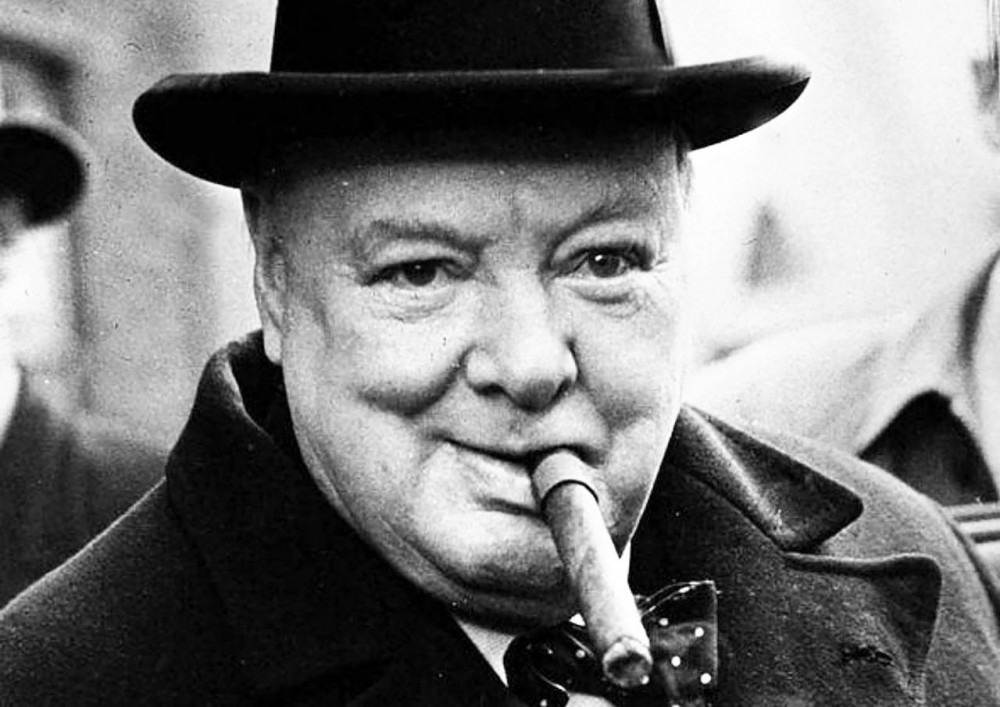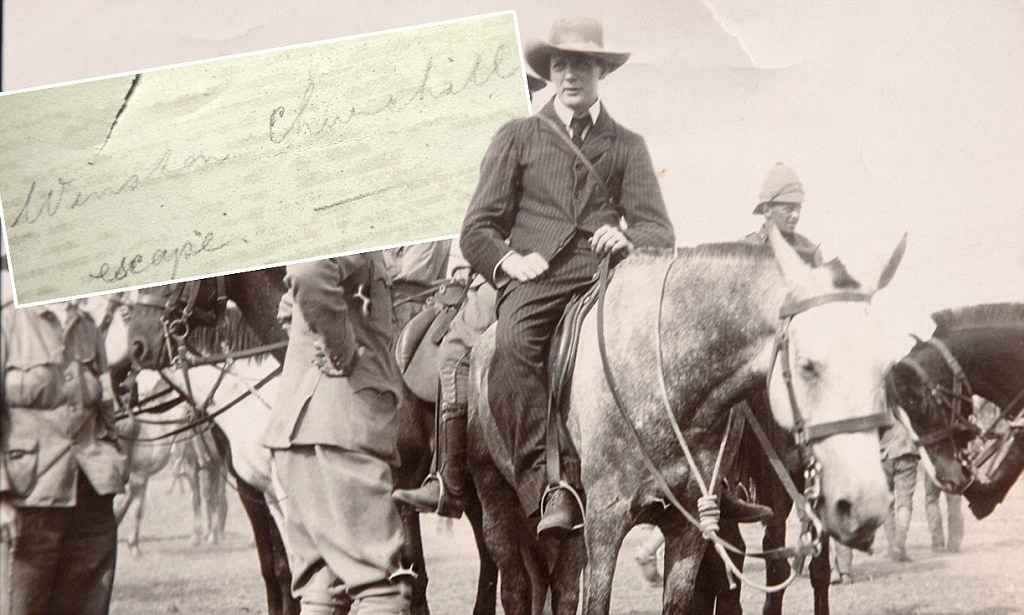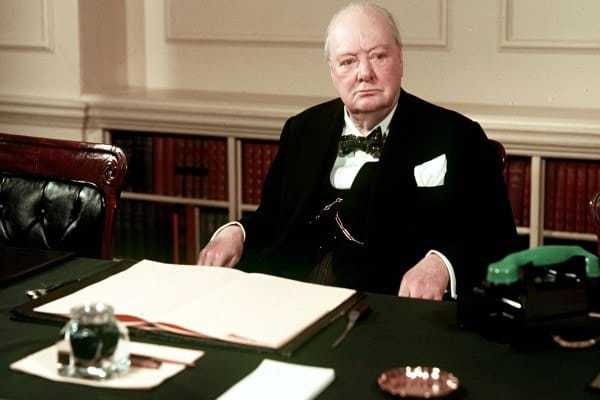10+ Interesting Facts About The Legend Winston Churchill
Winston Churchill, one of the 20th century’s most defining figures, achieved remarkable feats beyond his renowned political career and wartime leadership.
Churchill served as Prime Minister of the United Kingdom during two critical periods, from 1940 to 1945 and from 1951 to 1955. His leadership during World War II was pivotal in rallying the British people and forging alliances that were crucial to the Allied victory.
His speeches, such as the iconic “We shall fight on the beaches” and “Their finest hour,” are remembered as great examples of talking that inspired a country to stand up against oppression.
While many remember him for his political career, inspirational speeches, and significant role in World War II, there’s much more to his story. Here are some surprising facts about Winston Churchill that you might not know.
1. Churchill was a staunch advocate of the bow tie

Though American presidents such as Franklin Delano Roosevelt and Harry Truman wore bow ties, Winston Churchill is undeniably the most famous promoter of this accessory. For Sir Winston, the bow tie symbolized his unique style and respect for British elegance.
In 2012, the clothing site Bows-N-Ties named Winston Churchill the “Best Dressed World Leader of All Time.”
Besides his tailored suits and love of hats, Churchill is best remembered for his navy blue and white polka dot bow tie. Throughout his first term as the country’s leader, his iconic bow tie captured the public’s imagination.
It’s said that his sartorial choice became so popular that he directly inspired the mass production of the Blenheim bow tie, making it a fashion staple for many admirers.
Barry Singer, in his book Churchill Style: The Art of Being Winston Churchill, proposes that this particular tie forged a symbolic link between Churchill and his father, who also favored spotted bow ties.
In places with strict dress codes, the bow tie stands out as a sign of individuality and protest. During the Churchill years (1920 to 1960), dark and serious ties dominated political wardrobes.
When paired with a suit, the bow tie drew attention. For Churchill, this touch of style conveyed self-confidence.
2. Clementine was the fourth woman he courted

Despite being a global celebrity due to his adventures in India and Africa and a rising “political star”, he struggled with relationships.
Though lacking money, he had confidence, charm, and prospects. He devised a plan to find a suitable wife but ignored whether they had anything in common with him, leading to many rejections.
Pamela Ploden was the first woman he proposed to, then to American actress Ethel Barrymore, and later to Muriel Wilson, dubbed “Great Britain’s most beautiful girl.” All three women turned him down.

However, fate took a turn in 1908 when he met Clementine Hozier, who would become his lifelong partner and closest confidant. That spring, Churchill reluctantly attended a dinner party hosted by Lady St. Helier. Clementine, invited last minute to fill a vacant spot, ended up seated next to Churchill.
Initially grumpy, he soon found himself in deep conversation with Clementine. They discussed politics, welfare, France, history, biography, and philosophy, quickly becoming absorbed in each other’s company.
Despite their different backgrounds, they shared a deep emotional connection. Both had endured loveless childhoods and sought comfort and excitement in life. Six months later, they were married.
Churchill’s chief of staff later remarked that without Clementine, “the history of Winston Churchill and of the world would have been a very different story.”
3. Churchill was no fan of Gandhi

Throughout his life, Churchill opposed Indian autonomy and particularly disliked Gandhi, calling him a “seditious Middle Temple lawyer”. Churchill’s imperialist views extended to other colonies, labeling Zulus, Afghans, and Dervishes as “savages and barbarous peoples.”
Churchill and Gandhi first met in 1906, with Gandhi advocating for Indian rights in South Africa. Churchill believed that Gandhi and the Congress Party were threats to the British Empire.
By 1909, he realized Gandhi’s vision had to be halted to preserve the empire, which he saw as a model for a future universal community.
Gandhi, however, perceived the empire as a barrier to such a community, recognizing British reforms as efforts to consolidate power rather than promote self-government.
4. Churchill popularized the term “iron curtain”

Despite his misgivings about communism, Churchill allied with the Soviet Union during World War II. However, after the war, he grew concerned about the Soviet Union’s intentions.
In a March 1946 speech, he famously said, “an iron curtain has descended across the continent.” He noted that countries behind this line were under increasing control from Moscow.
This speech popularized the term “iron curtain,” which Western officials frequently used when discussing the USSR.
5. Churchill was a skilled painter

“Just to paint is great fun. The colours are lovely to look at and delicious to squeeze out.” Churchill wrote in his Painting as a Pastime book, “painting a picture is like fighting a battle; and trying to paint a picture is, I suppose, like trying to fight a battle.”
However, his over 500 oil paintings mostly depicted peaceful landscapes, far removed from the theme of war.

The story of Churchill as an artist is less known but reveals a different side of him. In May 1915, as the High Lord of the Admiralty, he faced the disaster of the Gallipoli Campaign and was demoted.
Seeking relief, he went on a family holiday in June to Hoe Farm in Sussex. His sister-in-law, Lady Gwendoline Churchill, suggested he try painting. From the moment he picked up the brush, he was hooked.
Churchill painted throughout his military service on the Western Front and during his political career. He found guidance from artists like Sir John Lavery, Walter Sickert, William Nicholson, and Paul Maze. In 1919, his painting of Sir John Lavery was displayed at the Royal Society of Portrait Painters in London.

Churchill’s art grew along with his political career. In 1921, he was appointed Secretary of State for the Colonies. His first exhibition was in Paris under the pseudonym Charles Morin. He painted the Pyramids while attending the Cairo Conference, and his paintings began to sell for £30 each.
As a prominent politician, his pseudonym soon became known, and he gained fame as an artist. Despite this, he remained humble, calling his paintings “daubs.” He gave interviews to the Strand Magazine in 1921 and Hobbies and Painting as a pastime in 1922, earning £1000 for the latter, more than he made from his art.
6. He had a legendary love of cigars

Winston Churchill loved good cigars
As a political reporter covering the Cuban War of Independence, Churchill got really into cigars. From then on, he was never without a Cuban-made Romeo y Julieta or La Aroma de Cuba in his hand. At his country home, Chartwell Manor, he kept over 3,500 cigars.
“The number of cigars he smoked is truly extraordinary,” says Fox, whose company sold its first cigars in 1787. Churchill was a client of Fox’s store, Robert Lewis, at London’s 19 St. James Street.

Handwritten ledgers, telegrams, and other records show that Churchill bought hundreds of thousands of cigars there. In 1964, the year before he died, he bought 825 cigars in six months: 250 in April, 275 in June, and 100 each in July, August, and September. “It was a pretty consistent pattern,” says Fox.
And that wasn’t his only supplier. “He did business with many cigar stores,” Fox notes, “but we were one of his largest suppliers.”
Churchill was so attached to his cigars that photographer Yousuf Karsh had to snatch it from him at the last moment to capture his famous 1941 portrait, which some say explains Churchill’s Bulldog scowl.
7. He was notably accident-prone

Though Churchill was a master of words, he was often clumsy on his feet. From childhood to adulthood, unlucky accidents seemed to follow him everywhere.
As a kid, he fell off a bridge and got badly hurt. As a soldier, he couldn’t escape accidents. Once, he dislocated his shoulder falling off a horse, and another time, he survived a plane crash during World War I.
In 1931, while in New York, he was hit by a car, resulting in a head wound. The incident occurred when he looked the wrong way while exiting that car.
Reflecting on this incident, he wrote in The Daily Mail, “I certainly suffered every pang, mental and physical, that a street accident or, I suppose, a shell wound can produce. None is unendurable. There is neither time nor the strength for self-pity.”
Despite all this, Churchill’s life story is one of resilience, showing that even with many bumps along the way, he never let accidents hold him back.
8. He was awarded a Nobel Prize in Literature.

Churchill wasn’t just a leader; he was also a talented writer. He wrote numerous books throughout his life, starting with his army experiences in India, Sudan, and South Africa.
He wrote about his father, the first Duke of Marlborough, and detailed accounts of World War I and II. He even tried his hand at fiction once, though he jokingly told his friends not to bother reading it.
In 1953, while serving as Prime Minister for the second time, Churchill won the Nobel Prize in Literature. He didn’t get it for his wartime exploits but for his great writing.
The prize honored “his mastery of historical and biographical description as well as for brilliant oratory in defending exalted human values.”
9. Churchill had strong connections to America.

Back in the late 19th century, it was common for wealthy British aristocrats to marry American heiresses, forging connections across the Atlantic.
One such union was between Lord Randolph Churchill, son of the Duke of Marlborough, and Jennie Jerome, a wealthy financier’s daughter from Brooklyn. Their marriage bore two sons: Winston in 1874 and Jack in 1880.
Throughout his life, Churchill held a deep affection for his mother’s homeland.
This bond was recognized in 1963 when President John F. Kennedy bestowed upon him the title of the first honorary citizen of the United States, praising his “bravery, charity, and valor, both in war and in peace,” calling him a “flame of inspiration in freedom’s darkest hour.”
10. A bold escape from a prison camp catapulted him to instant fame

At just twenty-five, Winston Churchill became famous worldwide for his daring escape from a prisoner of war camp during the Boer War in South Africa. A war correspondent at the time, he was captured after a British Army patrol he was with was ambushed by Boer forces.
Churchill, with two fellow prisoners, plotted an escape from the Pretoria prison. They made their move on the night of December 12th when the guards were distracted. Churchill scaled the fence and fled to Durban, where he was celebrated as a hero.
After this daring escape, Churchill continued his adventurous life, serving as a war correspondent and military officer in various parts of the world. His escape marked the beginning of his rise to fame and admiration for his courageous actions.
11. Winston Churchill achieved chart success

Winston Churchill achieved chart success not once but twice. The first instance was shortly after his death in 1965 when a recording of his speeches titled “The Voice Of” reached number 6 in the charts.
Decades later, in 2010, Churchill made history again at the age of 136 with “Reach for the Skies.” This album sampled two of his famous speeches over music by the Central Band of the Royal Air Force, reaching number 4 in the UK album charts.
The release commemorated the 70th anniversary of the Battle of Britain and featured wartime themes alongside Churchill’s powerful speeches. The success of these albums reflects the enduring impact of Churchill’s words and his role in British history.
12. He was the second oldest Prime Minister in British history

During his tenure, Winston Churchill served under two monarchs: King George VI and Queen Elizabeth II, making him one of ten prime ministers to do so. His political career, which began in 1900, spanned the reigns of six different monarchs: Victoria, Edward VII, George V, Edward VIII, George VI, and Elizabeth II.
Over his 60-year political career, there were 14 different prime ministers in office, including himself. The role changed hands 18 times among these individuals, starting with Robert Gascoyne-Cecil and ending with Alec Douglas-Home.
Churchill resigned as prime minister on April 5, 1955, at the age of 80 years and 126 days, making him the second oldest prime minister in British history, after William Ewart Gladstone, who resigned at 84 years and 63 days old.

